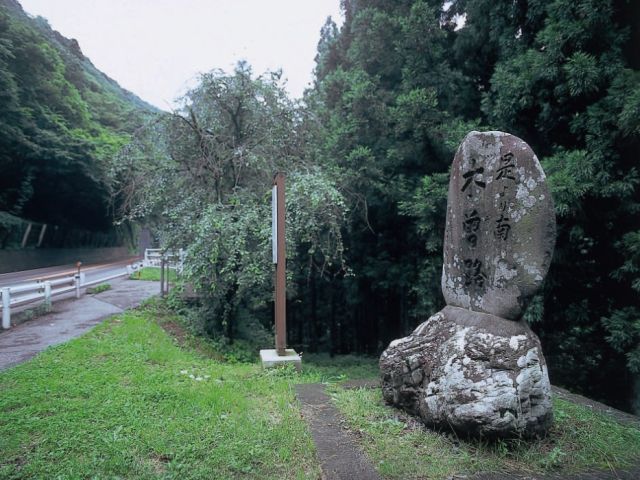
贄川駅から国道19号を塩尻方面へおよそ3kmほど行った、桜沢橋のたもとにある。江戸時代はここから南が尾張領、北が松本領だった。木曽路に入って最初の集落、桜沢で茶屋本陣を営んでいた百瀬栄[ももせさかえ]氏により、昭和16年(1941)に建立されたもので、石碑の裏には「歌ニ絵ニ其ノ名ヲ知ラレタル、木曽路ハコノ桜沢ノ地ヨリ神坂[みさか]ニ至ル南二十余里ナリ」と刻まれている。桜沢には今も、冠木門[かぶきもん]が立つ旧茶屋本陣百瀬家の建物が残っており、往時のたたずまいを伝えている。
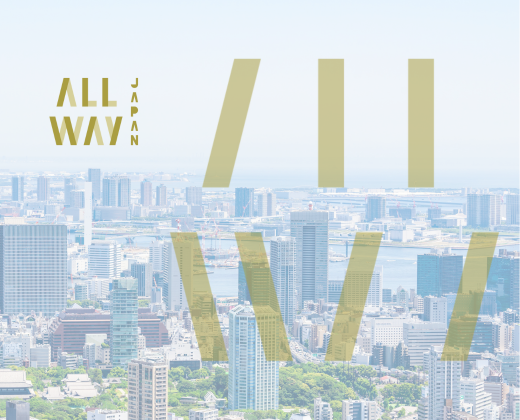
A guest house where you can experience mountain village living. It is said to be a pioneer of Japanese-style green tourism, and the content of the experience is authentic. It is a time to make self-catering using pesticide-free-grown vegetables harvested by yourself, to participate in river play and village events, and to chat while eating with the landlady at the hearth end. I think it is the best hospitality to spend time in the nature of Oka-mura, and I am free to spend it. Let's enjoy the life of a mountain village that changes greatly depending on the season.
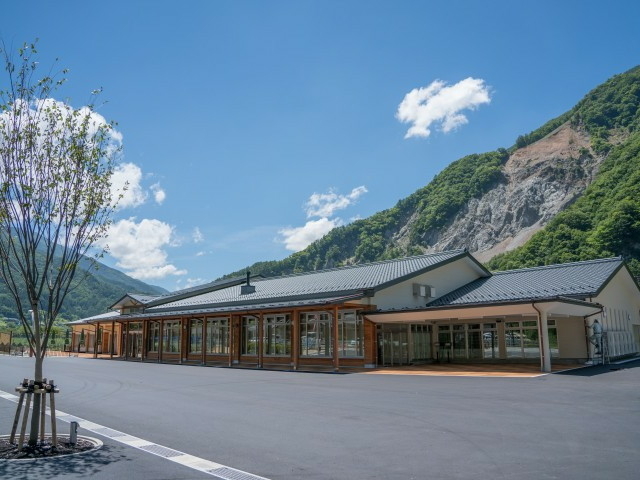
A roadside station located in Oka Village, an unexplored area surrounded by the Southern Alps and the Ina Mountains. Oka-mura is famous for its "Oka-kabuki", which was designated as the first national must-have intangible folk property in Jibai. Inside the facility, there is a tourist information center where you can get information about Oka Village, as well as a direct sales office and a restaurant. At the direct sale shop, there is a rich selection of vegetables and fruits with a dense taste and an increased sweetness due to the difference in temperature in the morning and evening, and blueberries are a proud dish that has many large grains. At the restaurant, you can enjoy the flavors of Oka-mura at two stores, "Akioji", which has a rich menu, and "Oi-na", where you can taste idiobie dishes such as steaks made with venison.

Introducing the history and folk culture of Oka village. In the corner where the living room of the farmhouse and the earth space are reproduced, the farm tools used in the harvesting work and other activities are displayed. In addition, Hata-weave tools are also exhibited, and you can experience them. You can also see the lunch box Lokuben used in Kabuki sights.
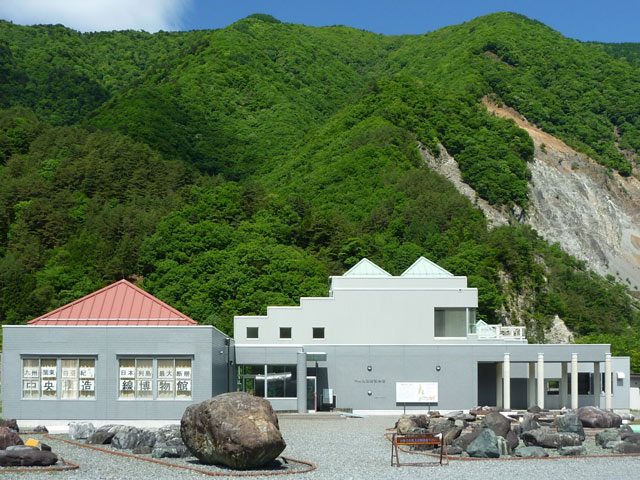
One of the main facilities of the Southern Alps (Central Structural Line Area) Geopark. The central structural line is a long fault extending from Kyushu to Kantō, where different rocks are bordered on both sides by the fault. In the museum, a geologic model of the Ōga village, a hagistori specimen of a central structural line outcrop, and 200 rock specimens collected from within the village are on display.
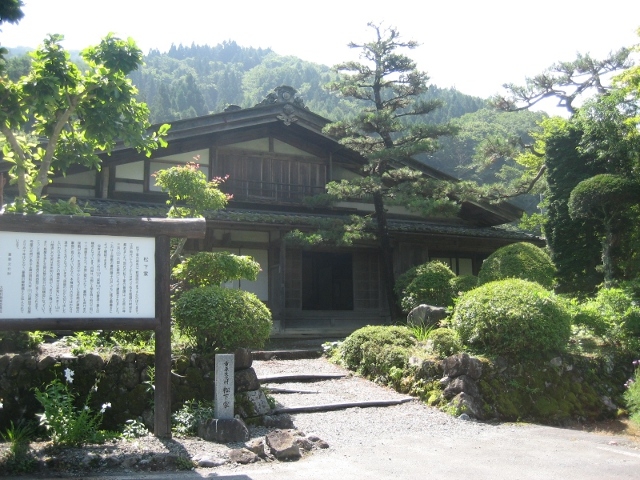
The Matsushita family has an old history of the royal family. The main house, which was built about 190 years ago, and the Tozo, which was built in the early Meiwa period, are extant and can be visited. The main house is a gabled-style structure, which is common in the southwestern part of Nagano Prefecture.

Roadside station on the Central Structure Line; near the former Kizawa Elementary School wooden school building, in Tyrol, Japan.
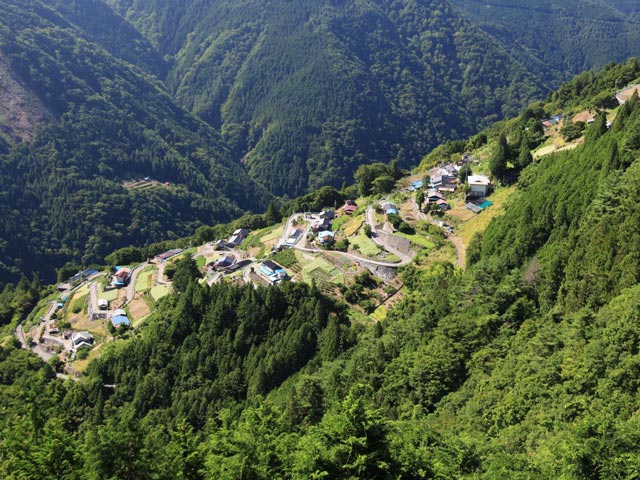
Private houses, buckwheat fields, and tea plantations spread over the slopes at an altitude of 800 to 1100m between the Southern Alps and the central structural line. The landscape of the unexplored area where the Toyama River flows through the deeply cut valley is worthy of the name of "Japanese Tyrol". The sky-no-sato viewpoint, where you can see the scenery of the village, is a popular spot that is worth a look. During the autumn leaves, the view from Plateau Lodge Shimoguri is good.
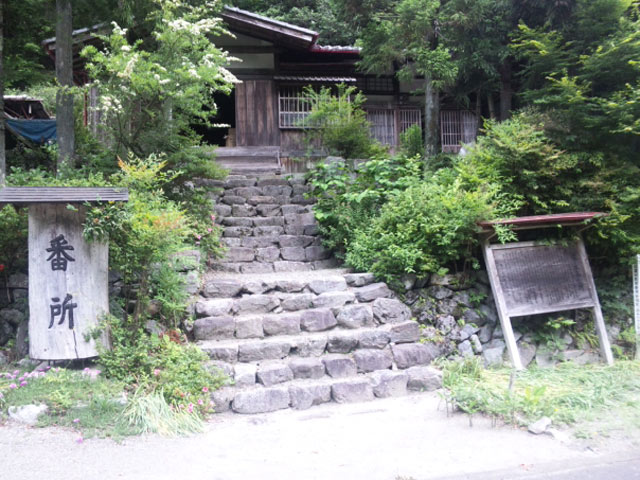
A highway that crosses Minami-Shinano, Iida City and Mizukubo-cho, Hamamatsu City, Shizuoka Prefecture. Since ancient times, it has been used as a way of faith to Akiba Shrine and as a way to transport salt. It was also the path during the Warring States period when Takeda Shingen led a large army to plot the capture of the Enshuju. At the foot of Aozuru Toge at the prefectural border, there remains the site of the Liang no Kishima Bansho (only the exterior can be visited), built by the Tozan clan at the order of Ieyasu during the Sengoku period. However, the section from the area near the site of Liang no Kibai to Aikuru Pass is closed to traffic. You can visit Aikuru Pass from the side of the water.

It was named because of the presence of a sacred place near the peak of the mountain of Morihira, which serves as the water source, and it springs up in the precincts of the Tōyama clan's Bodaiji and Ryōbakuji, which had ruled the land from the Warring States to the Edo period. It was also selected as one of the famous water hundreds of Heisei era, and has never dried up since about 500 years ago. Slightly hard water is rich in minerals and mellow, and is effective for relieving constipation and dieting.









